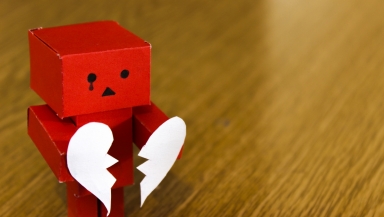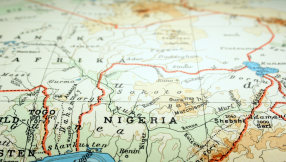
Thump! Crack! Ouch!
"Are you okay?"
The tumble took a toll on my foot. I remembered honestly answering no, I was not okay and I needed some help. Instantaneously, I knew I had injured myself and that I was hurt.
Shaking it off as just a sprain, I calmly asked for some assistance to get me to the side of the court and requested for some ice. With my foot tightly bandaged for compression, I thought we had it all under control as first aid had been applied immediately.
What I didn't know was how badly injured I was. The severity of the fall was comparably more than I had initially imagined.
Warning signs
By evening of the day of the incident, the foot was as swollen as an elephant's foot. The colour was probably not too far off an elephant's foot as it was fairly bruised all around. The pain started increasing as evening approached with throbbing around the foot and by the ankle.
By dusk, I could no longer put any pressure on my foot and was hopping around the house as any movement of the foot was met with pangs of pain. As nightfall came, the foot was hurting even when it was still.
Our body is amazingly created in the sense that it sends signals to us when any part of the body is injured. The increasing pain and immobilization of the foot was a flashing red light to warn me that the foot needed attending to as it wasn't its normal self.
Ignoring these warning signs could result in our hurt increasing and the injury worsening. Worse still, if left without seeking proper treatment, it could result in permanent disability.
When I was injured, I administered the first aid that I knew - resting the foot, icing it, compressing it with a bandage and elevating it to reduce swelling. With just simple treatment done promptly alongside taking anti-inflammatory pills, the swelling slowly went down and even the pain was bearable.
Amazingly, I could even start limping on the affected foot whenever the bandage was on. Though the swelling and bruising were still visible, I assumed I was recovering. However, after heading back to work, the many people who saw the foot noted that it was still fairly bruised and swollen. Additionally, the pain returned.
Heeding advice
I reckon I could actually bear a significant amount of pain but even though I did not consider the pain unbearable, I became more inclined to the signs my body was telling me as well as listening to the advice of people who have experienced it before. Undeniably, I could sense the foot needed more attention.
We decided to seek professional advice for my foot. At the after hours clinic after work, the x-ray showed that there was one tiny bone chipped off on each side of the ankle. The nurse and doctors also noted how tender the foot was and that on top of the fracture, there were several ligaments stretched and torn.
Yes, it was more than a mild ankle sprain. The ankle was moderately sprained with possibly two fractures. A moon boot and a pair of crutches were issued to provide a cushion and support around the affected area as well as a medical certificate to ensure time was given to rest the foot so it could start healing.
Sometimes, we need to be more aware of the nagging feeling in our body that calls our attention to it. Ignoring it and just parking it to a side trying to get on with life will not do any good to the hurt we have experienced. Instead, seeking help from people who know about the subject matter in which we are hurting would provide us a way forward towards recovery.
Our body
While researching about my injury, I was amazed to find that the ankle could remarkably bear more than 10 times the body weight during activities like running.
However, when my foot was injured, it could not even support any weight. Merely putting the foot on the ground caused a sharp pain through the foot right up the leg. The swelling, bruising, inflammation and pain shouted out that my foot was not fully functional.
What's more than that, when it wasn't functional, the other body parts had to compensate for its immobility. My thighs and back felt sore as if they were overstretched; it isn't too far from the truth as the other muscles had to support my weight which was now unevenly distributed due to the imbalance caused by the moon boot.
Our body was made to function as a whole with each part supporting each other and so is the church. Whether it is one person or a group in the body of Christ that has sustained an injury, whether self-inflicted or caused by others, be it accidentally or even intentionally, when one hurts, the whole body hurts with it.
Treatment and recovery
Resting the foot and avoiding unnecessary pressure on the injury is a necessary process, but it is only part of the healing. Au contraire, prolonged immobilisation could be detrimental as it introduces stiffness in the movement and muscle atrophy.
As the swelling subsides, remobilisation is needed to 'teach' the limb to move again. This should only be done after the initial healing has begun. I have learned that there is a timing for different interventions at every stage of the healing process.
Remobilisation activities, such as weight bearing and ankle movements, when the swelling subsides helps to ensure that the foot does not weaken or become too stiff. These activities though, unlike resting, require dedication as well as use up our energy.
What I have discovered is even with the proper equipment like the moon boot and crutches to help recovery, I still felt as if I ran a marathon when all I did was just walking and keeping up with others.
More energy is used when we are hurt than when we are well. So although we have begun our journey to recovery, this road is not an easy one but one which requires effort and takes time.
Knowing that the steps to recovery will be considerably draining prepares us for the journey ahead. As we seek help for our hurt and what's broken or torn, let's persevere on in this recovery journey knowing that with the proper support and in time, we will once again be made whole.













